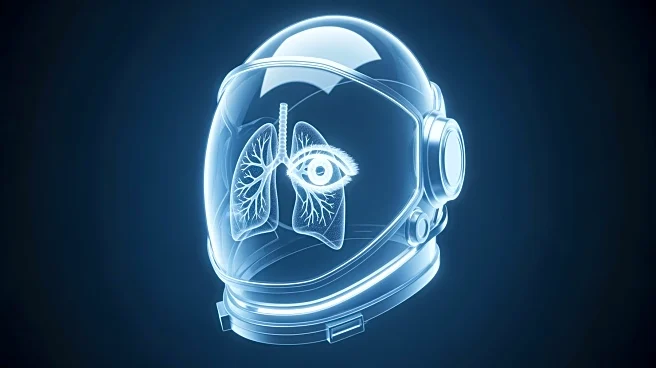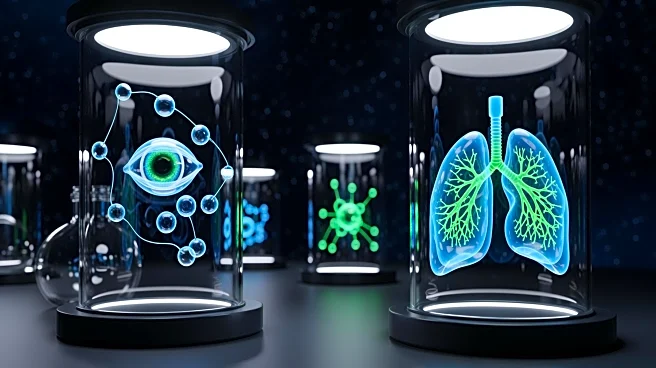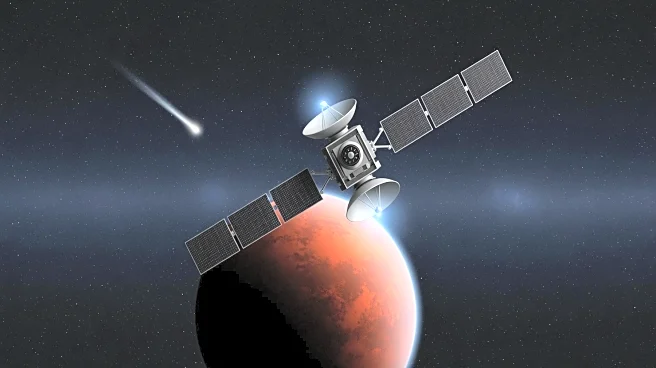What's Happening?
NASA's Expedition 73 crew aboard the International Space Station is conducting research to address vision problems and respiratory issues caused by microgravity. NASA astronauts Mike Fincke and Jonny Kim
are testing a thigh cuff designed to redirect body fluids towards the lower body, potentially reducing pressure on the brain and eyes. This research aims to develop simple tools and non-invasive methods to protect astronauts' health during missions to the Moon, Mars, and beyond. Additionally, Roscosmos cosmonauts Sergey Ryzhikov and Alexey Zubritsky are participating in experiments to understand the impact of space on lung function, while other crew members are involved in cargo organization and Earth observation tasks.
Why It's Important?
The research conducted by NASA is crucial for ensuring the health and safety of astronauts on long-duration space missions. Understanding and mitigating the effects of microgravity on vision and respiratory systems can lead to improved countermeasures, enhancing the overall success of future missions. This work supports NASA's goals for deep space exploration, including potential missions to Mars, by addressing key health challenges faced by astronauts. The findings could also have implications for medical research on Earth, offering insights into fluid dynamics and respiratory health.
What's Next?
The ongoing research aboard the International Space Station will continue to explore solutions for health issues related to space travel. As NASA prepares for future missions to the Moon and Mars, the development of effective countermeasures for vision and respiratory problems will be critical. The results from these studies may inform the design of new equipment and protocols to ensure astronaut safety and mission success.
Beyond the Headlines
The research on fluid dynamics and respiratory health in space could lead to advancements in medical technology and treatment options on Earth. Understanding how microgravity affects the human body may provide new insights into conditions such as glaucoma and respiratory disorders, potentially benefiting patients worldwide.











